NerveWellness.info
Understanding Neuropathy: A Simple Guide to Navigating Nerve Pain
Neuropathy might sound like a complex medical term, but at its heart, it’s a condition that many people across the globe face, impacting their daily lives in significant ways. Imagine waking up one day to find your hands or feet tingling, as if they’ve fallen asleep. Except, this feeling doesn’t go away easily—it lingers, sometimes accompanied by pain, numbness, or even a loss of strength. This is what life can be like for someone with neuropathy.
Neuropathy, also known as peripheral neuropathy, is a condition characterized by damage or dysfunction of one or more nerves outside the brain and spinal cord, leading to numbness, pain, weakness, and a variety of other symptoms. These peripheral nerves are the lines of communication between the central nervous system (the brain and spinal cord) and the rest of the body, responsible for controlling muscles, carrying sensory information to the brain, and regulating autonomic functions like blood pressure and heart rate.
Neuropathy Facts
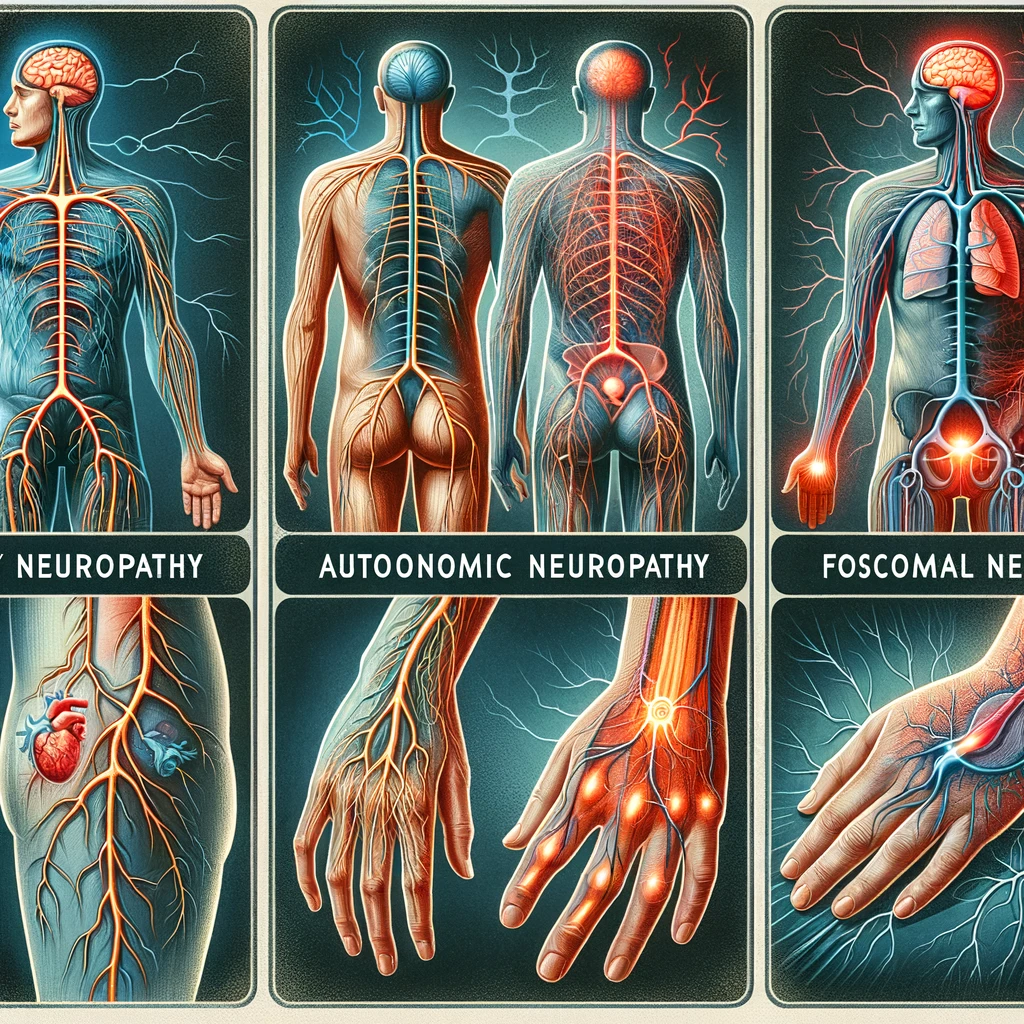
Types of Neuropathy
Neuropathy manifests in various forms, including peripheral, affecting extremities, and autonomic, impacting involuntary functions. Proximal neuropathy, often linked to diabetes, targets thighs, hips, and buttocks. Understanding these types illuminates the diverse impacts on the body and guides targeted treatment strategies.
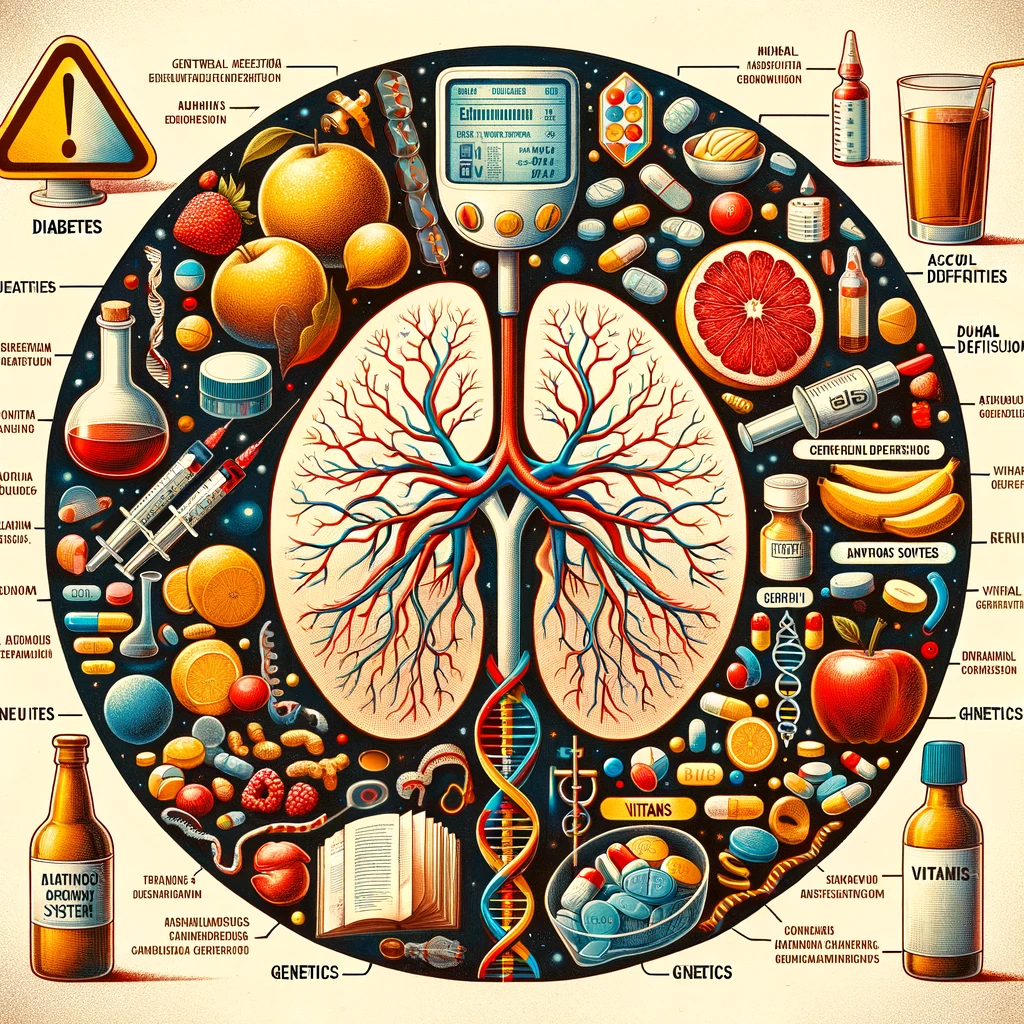
Causes & Risk Factors
Neuropathy’s primary culprits include uncontrolled diabetes, exposing nerves to damage, and chemotherapy, which can inadvertently harm nerve cells. Excessive alcohol consumption further compounds risk, highlighting the importance of understanding and mitigating these factors to prevent or delay neuropathy onset.
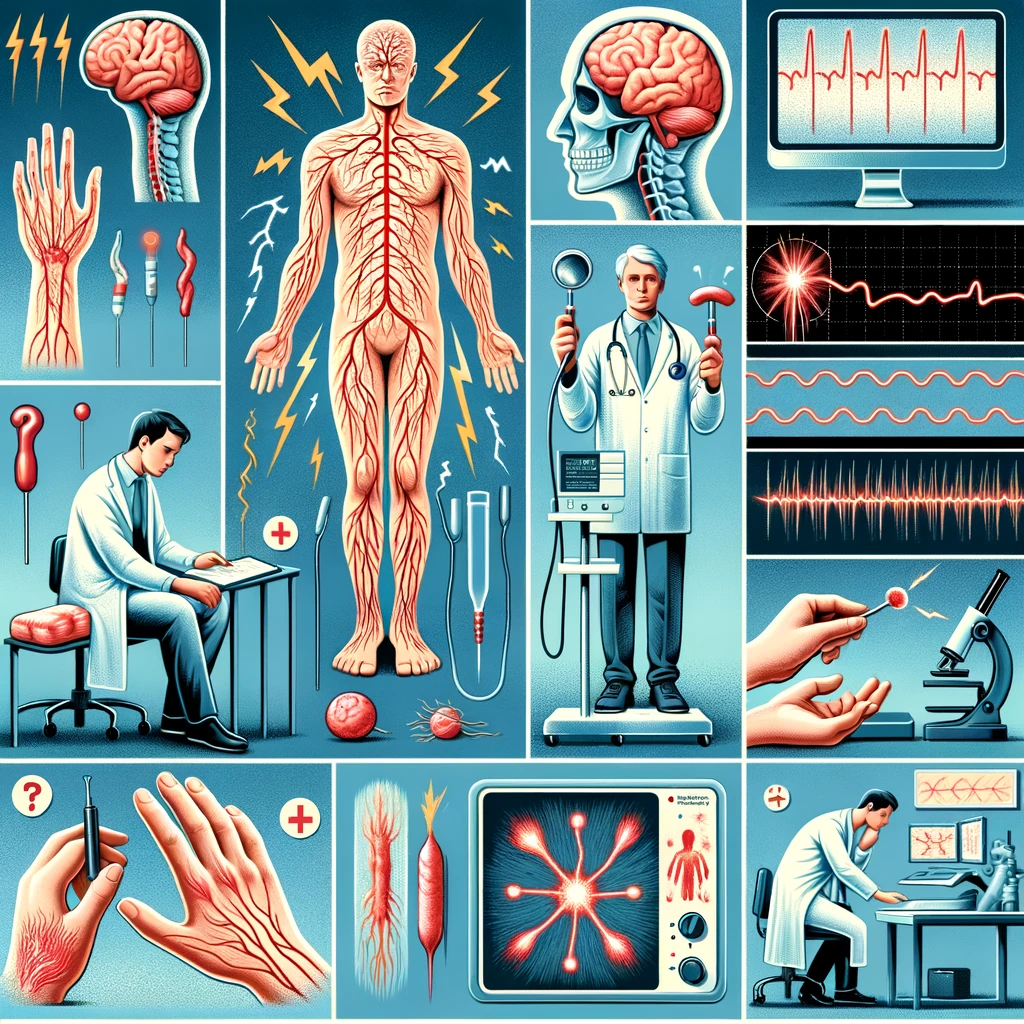
Symptoms & Diagnosis
Identifying neuropathy early hinges on recognizing tingling, numbness, and pain, especially in diabetic individuals. Diagnosing involves comprehensive assessments including nerve function tests and symptom analysis. Early identification is crucial for effective management, underscoring the need for awareness of these hallmark signs.
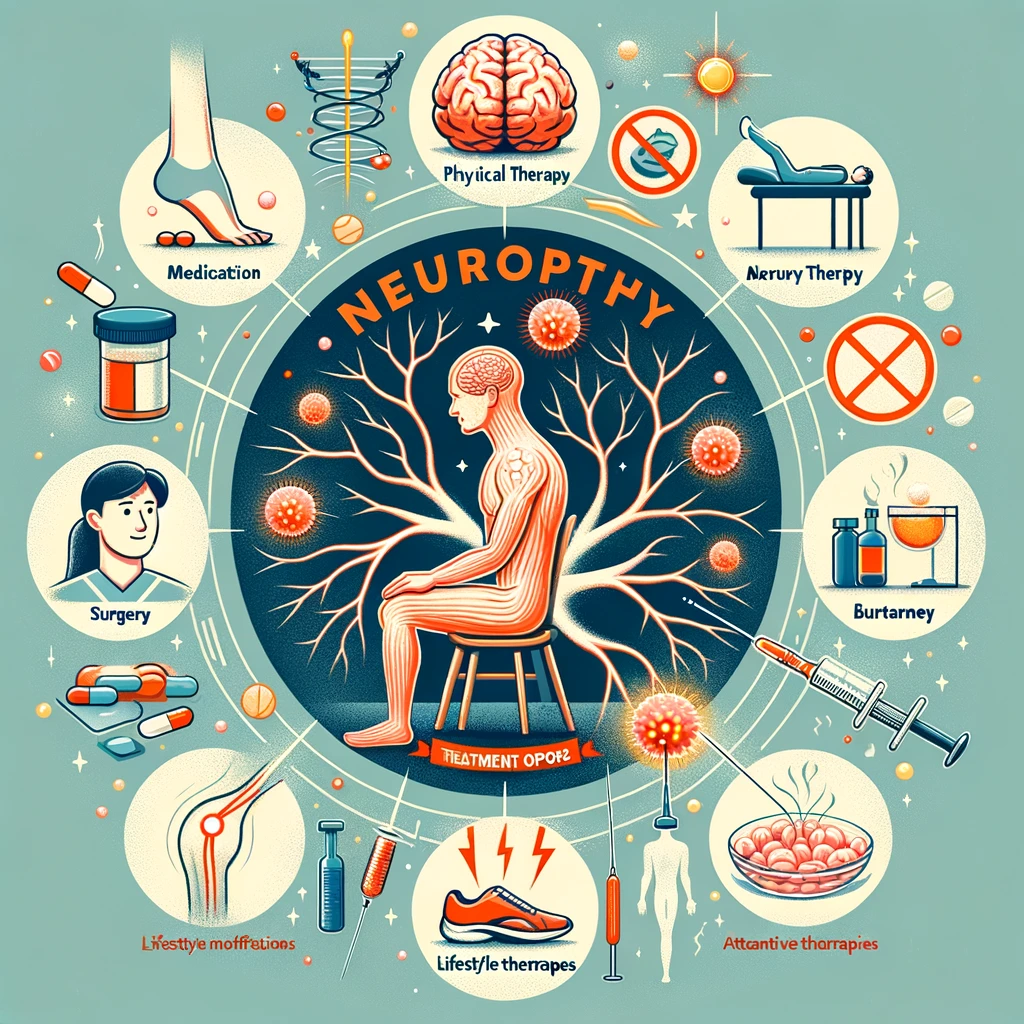
Treatment Options
Treating neuropathy involves pain management, often through medication, and exploring non-pharmacological approaches like physical therapy. Advances in treatment offer hope, including nerve stimulation and innovative drug therapies. Tailoring treatment to the individual’s condition and preferences is key to effective neuropathy management.
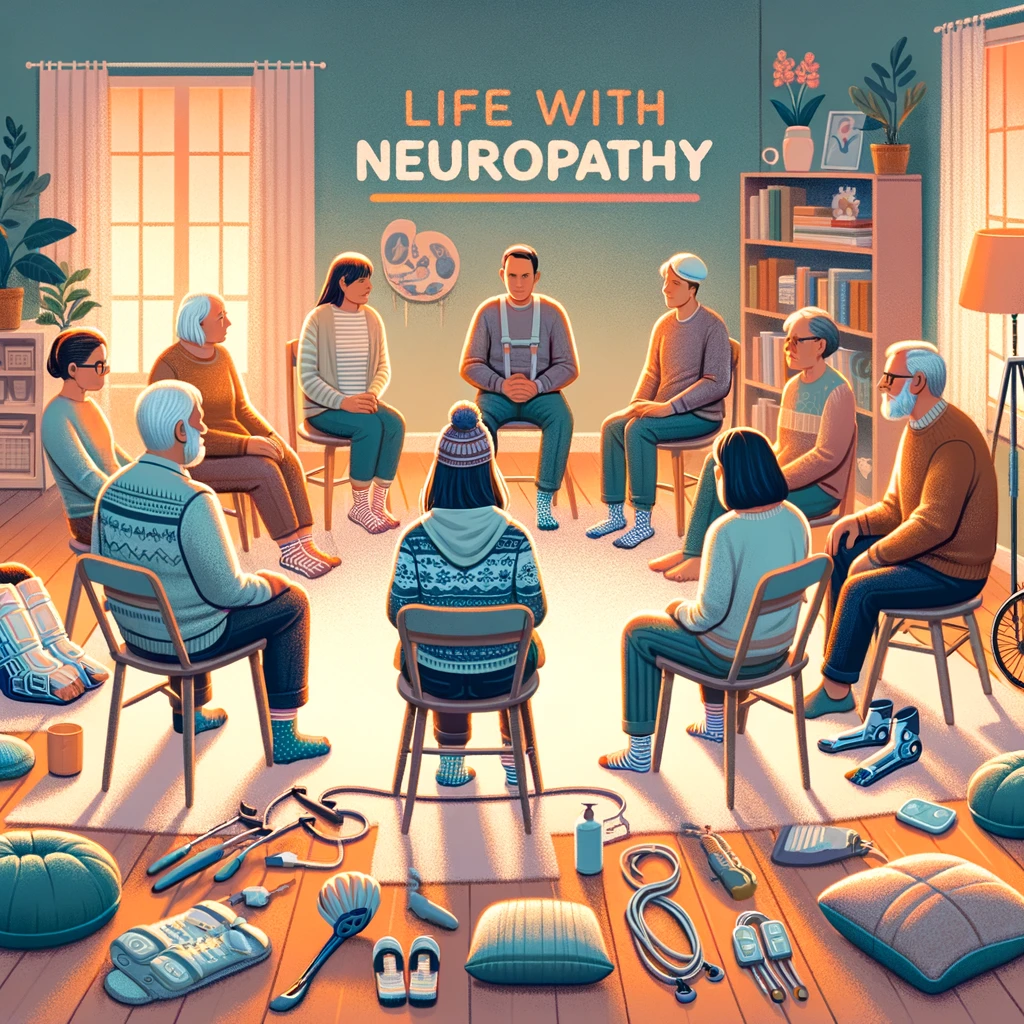
Living with Neuropathy

Diet & Nutrition
A balanced diet rich in vitamins beneficial for nerve health, with controlled sugar intake, can significantly impact neuropathy progression. Incorporating nutrient-dense foods and monitoring carbohydrate consumption helps manage symptoms and potentially slow disease advancement, highlighting nutrition’s role in neuropathy care.
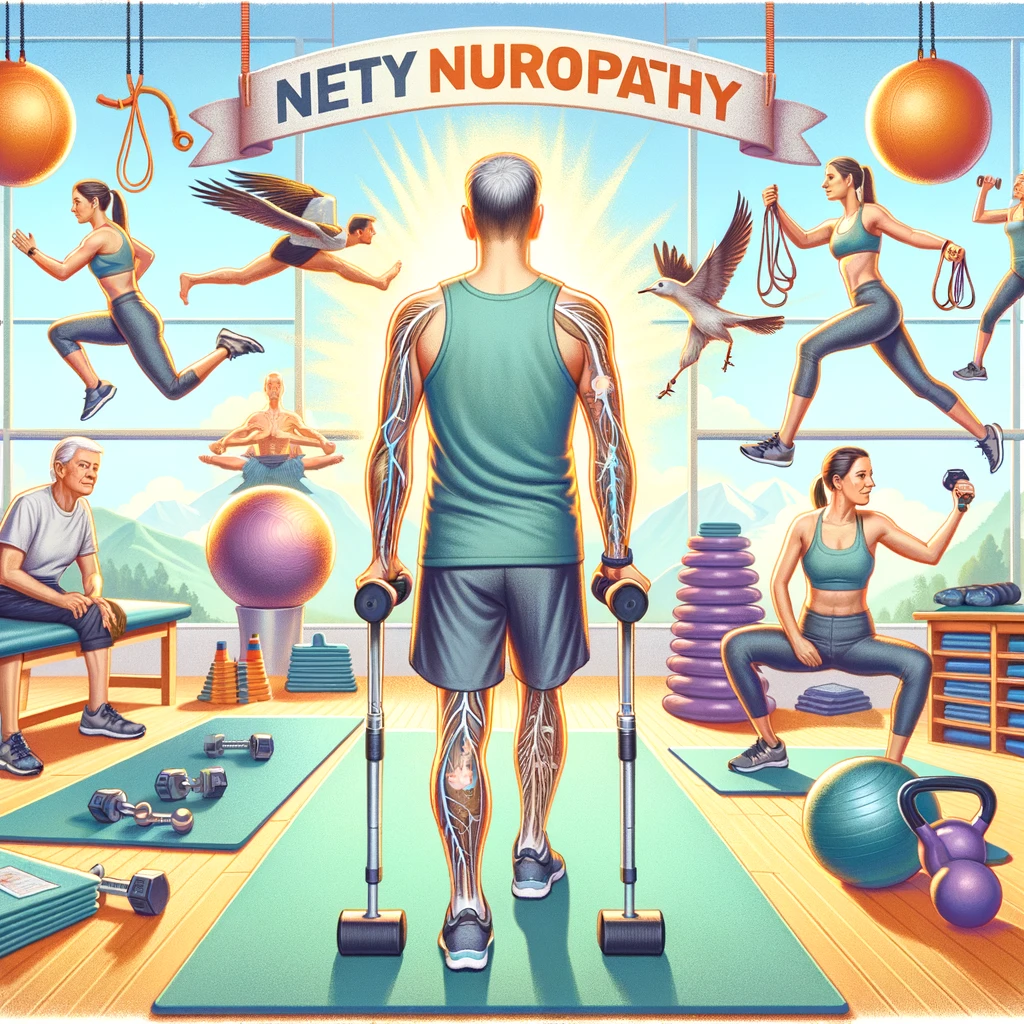
Exercise & Physical Therapy
Physical therapy and tailored exercise regimens play critical roles in managing neuropathy, enhancing mobility, and relieving pain. Regular, gentle exercises designed for nerve health can improve quality of life, demonstrating the importance of physical activity in neuropathy treatment plans.

Research & Innovations
Ongoing research in neuropathy treatment, including stem cell therapy and genetic studies, promises breakthroughs in understanding and managing the condition. Innovations offer hope for effective treatments, underscoring the dynamic nature of neuropathy research and the potential for future advancements in care.

Resources & Support
Accessing quality resources, including support groups, educational materials, and specialists, is essential for those affected by neuropathy. These resources provide vital information, emotional support, and guidance, helping patients navigate the complexities of their condition and fostering a supportive community for those impacted.
John’s Journey
After being diagnosed with diabetic neuropathy, John struggled with constant foot pain and numbness. He decided to take control of his health, changing his diet and exercising regularly. These changes, along with medication, helped manage his symptoms, and he now advocates for diabetes awareness and neuropathy management through a blog.
Emma’s Experience
Emma, a cancer survivor, developed chemotherapy-induced peripheral neuropathy (CIPN). The tingling and weakness in her hands and feet made daily tasks challenging. With the support of her healthcare team, she found relief through physical therapy and acupuncture, allowing her to resume her passion for gardening and painting.
Alex’s Adaption
Alex, a software engineer, noticed sudden sharp pains and muscle weakness due to acute idiopathic neuropathy. This diagnosis initially hindered his work and personal life. Through occupational therapy and ergonomic adjustments at his workstation, Alex learned new ways to stay productive and manage his condition effectively.
Sofia’s Story
Living with autoimmune-induced neuropathy, Sofia faced daily struggles with mobility and pain. She found solace and support in online communities where she shared her journey and learned from others. Sofia also explored yoga and meditation, which helped her cope with pain and stress, significantly improving her quality of life.
Daniel’s Determination
Daniel developed neuropathy from an injury, leading to chronic pain and depression. Refusing to let this define his life, he sought out various treatments, eventually finding a combination of medication, therapy, and lifestyle changes that worked for him. Daniel now volunteers at a local clinic, sharing his story and helping others find hope and healing.